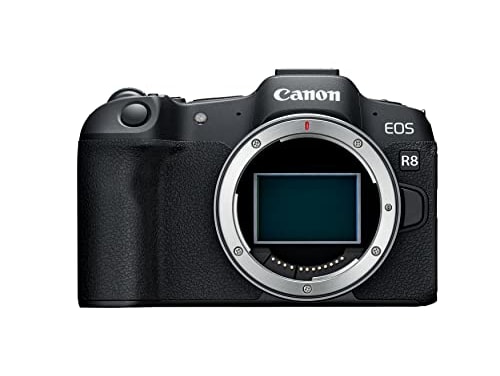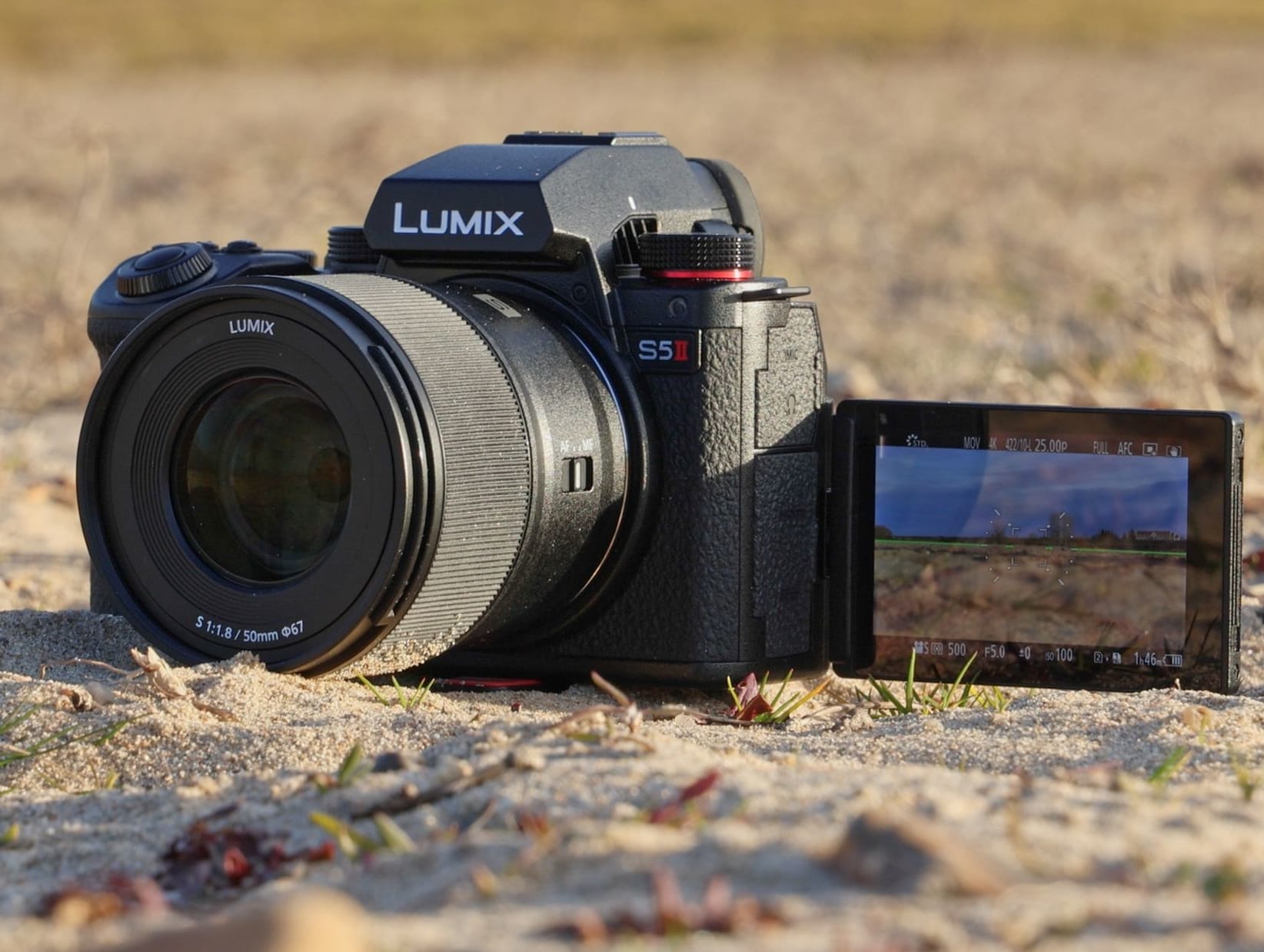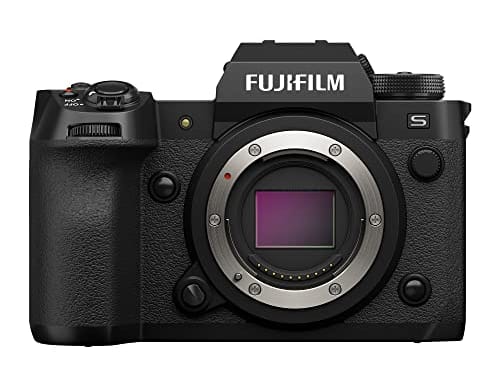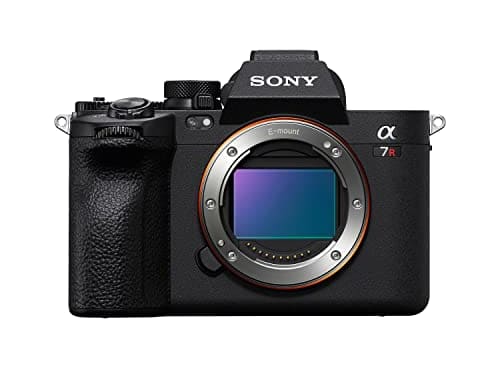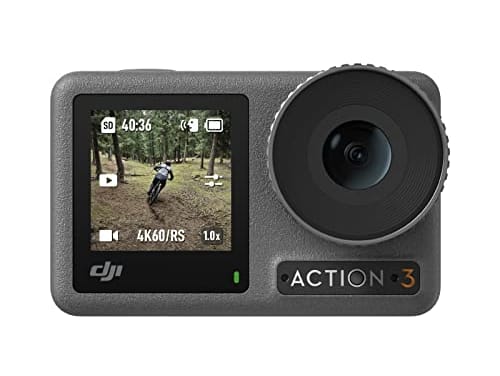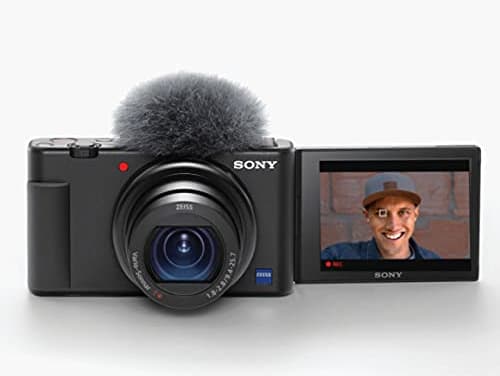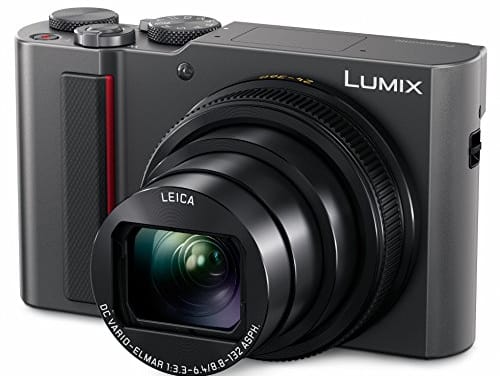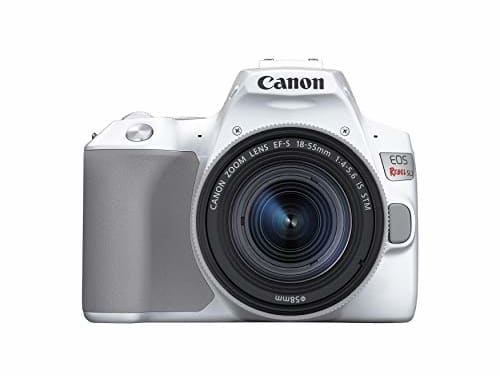The best cameras for 2023
It’s a strange and wonderful time to buy a camera. Since smartphones have gutted the casual photography market, manufacturers are focusing on building technological marvels designed for very specific uses. Mirrorless cameras continue to improve in terms of autofocus, video and more. Action cams provide sharp, fluid video, compact cameras are targeted to both tourists and vloggers, and DSLRs are available at some of the best prices we’ve seen. With so much choice, though, you may need some guidance to find just the right camera – and that’s where we come in. Whether you’re a creator looking for just the right vlogging camera, an aspiring wildlife photographer or an adrenaline sports junkie, we’ll help you find the perfect model to match your budget and needs.
-
Best mirrorless camera under $2,000
Canon EOS R50
$679 -
Runner up
Canon EOS R8
$1,499 -
Another good option
Panasonic Lumix S5 II
$1,998 -
Best mirrorless camera over $2,000
Sony Alpha ZV-E1
$2,200 -
Runner up
Fujifilm X-H2S
$2,499 -
Another good option
Sony Alpha 7R V
$3,898 -
Best action camera
GoPro Hero 11 Black
$400 -
Runner up
DJI Osmo Action 3
$329 -
Best compact camera
Fujifilm X100V
$1,400 -
Runner up
Sony ZV-1
$748 -
Another good option
Panasonic Lumix ZS200
$408 -
Best DSLR camera
Nikon D850
$2,797 -
Runner up
Canon EOS Rebel SL3
$749
What to consider before choosing a camera
There are a lot of reasons to choose a camera over a smartphone. The larger sensors in mirrorless cameras let more light in, and you have a wide choice of lenses with far superior optics. Where smartphones have one f/stop, cameras have many, which gives you more exposure control. You also get natural and not AI-generated bokeh, quicker shooting, a physical shutter, more professional video results and so on.
With that extra quality comes a lot of extra factors to consider, however. The first thing is sensor size. In general, the larger the sensor size, the better (and usually more expensive) the camera.
Full frame is available on models like Sony’s new ZV-E1, the Canon EOS R6 II and Panasonic S5 II. At a size equivalent to 35mm film (36 x 24mm), it offers the best performance in terms of image quality, low-light capability and depth of field. It’s also the most expensive and finicky. While bokeh looks incredible at f/1.4, the depth of field is so razor thin that your subject’s nose might be in focus but not their eyes. This can also make video shooting difficult.
The next size category is APS-C (around 23.5 x 15.6mm for most models and 22.2 x 14.8mm for Canon), offered on Fujifilm’s X Series lineup, Canon’s R10 and R50 and the Nikon Z50. It’s cheaper than full frame, both for the camera body and lenses, but still brings most of the advantages like decent bokeh, high ISOs for low-light shooting and relatively high resolution. With a sensor size the same as movie cameras, it’s ideal for shooting video, and it’s easier to hold focus than with full-frame cameras.
Micro Four Thirds (17.3 x 13mm), a format shared by Panasonic and Olympus, is the next step down in sensor size. It offers less bokeh and light-gathering capability than APS-C and full frame, but allows for smaller and lighter cameras and lenses. For video, you can still get reasonably tight depth of field with good prime lenses, but focus is easier to control.
The other common sensor size is Type 1 (1 inch), which is actually smaller than one inch at 12.7 x 9.5mm. That’s used mostly by compact models like Sony’s ZV-1 vlogging camera. Finally, action cameras like the GoPro Hero 11 and DJI’s Osmo 3 have even smaller sensors (1/1.9 and 1/1.7 size, respectively).
For photographers, another key factor is autofocus (AF) speed and accuracy. Most modern mirrorless cameras have hybrid phase-detect AF systems that allow for rapid focus and fast burst speeds. The majority also feature AI smarts like eye-detect AF for people and animals. However, some models are just a bit faster and more reactive than others.
The electronic viewfinder (EVF) and rear display are also key. The best models have the sharpest and brightest EVFs that let you best judge a shot before taking it. For things like street photography, it’s best to have as bright and sharp a rear display as possible. You may also want a screen that flips out rather than just tilting.
DSLRs and mirrorless cameras let you change lenses, but you’re stuck with what’s built into a compact camera. While that’s great for portability, a single lens means you’re going to sacrifice something. Fujifilm’s X100V, for instance, has a fast but fixed 35mm-equivalent f/2.0 lens and no zoom. Sony’s RX100 V has a 24-70mm zoom, but it’s slower at the telephoto end (f/2.8) and less sharp than a prime lens.
When it comes to video, there are other factors to consider. Does your camera do “pixel-binning” for video recording or read out the entire sensor? Better cameras tend to do the latter. Another key factor is sensor speed, as slower sensors tend to have more rolling shutter that can create a “jello” effect that skews video.
In addition, how’s the battery life? How do you like the handling and feel? How long can you shoot video before the camera heats up or stops? Does it support 10-bit HDR video? Is there a microphone and/or a headphone jack? (if you do a lot of interviews, it’s preferable to have both.) How’s the video autofocus? All of these things play a part in your decision – so now let’s take a look at the best models.
The best cameras
Best mirrorless cameras
Mirrorless is far and away the biggest category of cameras these days, so it’s the best way to go if you’re shopping for a modern camera with the most advanced features. Both Canon and Nikon recently announced they’re discontinuing development of new DSLRs, simply because most of the advantages of that category are gone, as I detailed in a recent video. The biggest selling feature of a mirrorless camera is the ability to change lenses depending on the type of shooting you want to do.
The key features are sensor size, resolution, autofocus, shooting speeds and video specs. If you’re primarily a sports or wildlife photographer, you’ll likely want fast shooting speeds and accurate autofocus. Portrait and landscape shooters will likely favor large sensors and high resolution to maximize image quality. And content creators will want to look for things like flip-out displays, high-end video specifications and good in-body stabilization. Price is of course a major factor as well.
Mirrorless cameras under $2,000
Best mirrorless camera under $2,000: Canon EOS R50
My top budget camera pick is Canon’s brand new 24.2-megapixel R50, which is a great model for both photographers and content creators. It can shoot bursts at up to 15 fps in electronic shutter mode, and offers 4K 10-bit at up to 30p with supersampling and no crop. It has a fully articulating display, and unlike other cameras in this price range, an electronic viewfinder. It uses Canon’s Dual Pixel AF with subject recognition mode, and even has a popup flash. The only drawback is the lack of decent quality lens that’s as affordable as the camera itself, and a lack of in-body stabilization.
Runner up: Canon EOS R8
Full-frame cameras generally used to start at $2,000 and up, but Canon’s brand new EOS R8 is priced at just $1,500. It offers Canon’s excellent Dual Pixel AF with subject recognition AI, and can shoot bursts at up to 40 fps. It’s equally strong with video, supporting oversampled 10-bit 4K at up to 60 fps. The R8 also offers a flip-out display, making it great for vloggers. The main drawback is a lack of in-body stabilization.
Another good option: Panasonic Lumix S5 II
Content creators should take a hard look at Panasonic’s full-frame S5 II. It’s the company’s first camera with hybrid phase-detect AF designed to make focus “wobble” and other issues a thing of the past. You can shoot sharp 4K 30p video downsampled from the full sensor width, or 4K 60p from an APS-C cropped size, all in 10-bit color. It even offers 5.9K 30p capture, along with RAW 5.9K external output to an Atomos recorder. You also get a flip-out screen for vlogging and updated five-axis in-body stabilization that’s the best in the industry. Photo quality is also good thanks to the dual-gain 24-megapixel sensor. The main drawback is the slowish burst speeds.
Mirrorless cameras over $2,000
Best mirrorless camera over $2,000: Sony ZV-E1
Equipped with the same backside-illuminated (BSI) 12-megapixel sensor as the A7S III, Sony’s ZV-E1 offers excellent low-light performance, 4K at up to 120p and a host of new AI features like auto framing. It also comes with an updated in-body stabilization system aimed at vloggers that can smooth out even jolting movements like footsteps. The $2,200 price tag makes it enticing for vloggers as it offers features found on the $3,500 A7S III for considerably less money.
Runner up: Fujifilm X-H2S
If you’re OK with a smaller APS-C sensor, check out the Fujifilm X-H2S. It has an incredibly fast stacked, backside-illuminated 26.1-megapixel sensor that allows for rapid burst shooting speeds of 40 fps, along with 4K 120p video with minimal rolling shutter. It can capture ProRes 10-bit video internally, has 7 stops of in-body stabilization and a class-leading EVF. Yes, it’s expensive for an APS-C camera, but on the other hand, it’s the cheapest stacked sensor camera out there. The other downside is AF that’s not quite up to Canon and Sony’s level.
Another good option: Sony A7R V
For the ultimate high-resolution camera, check out Sony’s A7R V. With a 61-megapixel sensor, it shoots sharp and beautiful images at a very respectable speed for such a high-resolution model (10 fps). It has equally fast and reliable autofocus, the sharpest viewfinder on the market and in-body stabilization that’s much improved over the A7R IV. Video has even improved, with 8K and 10-bit options now on tap, albeit with significant rolling shutter. If you don’t need the video, however, Sony’s A7R IVa does mostly the same job, photo-wise, and costs a few hundred dollars less.
Best action camera
The most important features to look for in an action cam are image quality, stabilization and battery life. GoPro has easily been beating all rivals over the last few years in all those areas, but DJI made some strides last year with the Osmo Action 3. At the same time, GoPro’s latest models are more expensive than rivals.
Best action camera: GoPro Hero 11 Black
GoPro didn’t change the design on its latest model, but it has a larger sensor that enables a couple of cool features – Horizon Lock stabilization and Full Frame mode that makes it easier to shoot for, say, TikTok and YouTube at the same time. It also offers a new wider, though slightly distorted Hyperview field of view.
Otherwise, the Hero 11 Black offers better video quality than ever (up to 5.3K 60p), Hypersmooth stabilization that’s still the best in the business (by far), battery life that’s improved by 40 percent over the last model, and more. It’s easily the best action camera on the market, but you pay for that: it’s $400 with a one year subscription ($500 without it), compared to $329 for the DJI Osmo Action 3 and $300 for the Insta360 RS 4K bundle. If you’re serious about filming extreme sports, though, it’s worth it.
Runner up: DJI Osmo Action 3
After experimenting with an oddball modular design on the Action 2, design has gone back to a more classic action cam design on the Osmo Action 3. It also comes with a slick new magnetic quick-release mount that lets you connect the camera directly to a GoPro-style mount with or without the case. Video quality and stabilization are quite good, but fall short of the Hero 11 Black (the Action 3 tops out at 4K 120p resolution compared to 5.3K 60p on the GoPro). While it’s not quite as good as the Hero 11, it’s considerably cheaper.
Best compact camera
This category has fewer cameras than it did even a few years ago and many models are older, as manufacturers focus instead on mirrorless models. However, I’m still a big believer in compact cameras. They’re a big step up from smartphones quality-wise, and a lot of people will take a compact traveling or to events when they’d never bother with the hassle of a DSLR or mirrorless camera.
Compacts largely have type 1-inch sensors, but a few offer larger options, particularly Fujifilm’s XF-100V. Another popular model, Sony’s XV-1, is primarily aimed at content creators looking to step up. In any case, desirable qualities include image quality, a fast lens, relatively long zoom, flip-out display, good battery life, a high quality EVF, decent video and good pocketability.
Best compact camera: Fujifilm X100V
The X100V is the latest in Fujifilm’s famous fixed-lens X100 camera series. Like other models in the lineup, it has an APS-C sensor and a 23mm f/2.0 lens, equivalent to 35mm on a full-frame sensor. You also get the same hybrid optical/electronic viewfinder, mechanical dials, film simulations and good looks as before. But the X100V is the most significant advancement in the series’ history. It has Fujifilm’s latest 26.1-megapixel X-Trans 4 CMOS sensor compared to 24.2-megapixels on the last model and a new, sharper lens to handle that extra resolution.
A new tilting rear display makes “shooting from the hip” street photography much easier, as does the fast 11 fps/20 fps shooting speeds in mechanical/silent shutter modes. You also get a better hybrid phase- and contrast-detect autofocus (AF) system with more AF points along with face and eye detection. Finally, it now has the same 4K video-shooting features as the X-T30. It doesn’t come cheap, but the X100V is the ultimate camera if you’re into street photography – assuming you can find one.
Runner up: Sony ZV-1
The ZV-1 is Sony’s first RX100-series camera designed specifically for vlogging. It does that job well thanks to a lightweight body, built-in high-quality microphone, flip-out display, best-in-class autofocus and excellent image quality. The 24-70mm lens is sharp, but it needs to be wider because of the 25 percent crop when using electronic stabilization. It also lacks a true touch display and a headphone port. That nitpicking aside, if you’re looking to step up from a smartphone or just want something simple, it does the job nearly perfectly.
Another good option: Panasonic ZS-200
For a value compact camera, the best option is Panasonic’s 20-megapixel ZS-200. It offers a lot of features for the price, like a 1-inch, 20.1 megapixel sensor, 5-axis stabilization, 4K, 30 fps video and more. Its main claim to fame, though, is the 24-360x lens that offers incredible reach for travel and more. Though it dates back to 2018, it’s actually one of the more recent compact models.
Best DSLR camera
With mirrorless cameras taking over the interchangeable lens market, but DSLRs still give you the ability to change lenses at relatively cheap prices. The defining feature is the reflex mirror that lets you look directly through the lens at your subject with no electronics in between. Most also have very fast autofocus thanks to a dedicated phase-detect sensor, and very fast battery life. However, many lack features you’d expect on modern mirrorless cameras like subject tracking, eye-detection and more.
Best DSLR camera: Nikon D850
Nikon’s full-frame (FX) D850 is the best deal on a high-end camera and arguably the best camera for photography. With a 45.7-megapixel sensor and max 102,400 ISO, it gives you the best quality for the money, whether mirrorless or DSLR. It can also shoot fast, at up to 7fps, which is very good for such a high-res camera. In addition, the battery life (1840 shots on a charge) puts any mirrorless option to shame, and there’s a massive number of FX Nikkor lenses to choose from. Nikon has upped its video game as well with the D850 by introducing 4K internal recording. If you’d still rather have a live optical rather than an electronic view, the D850 is the best option available.
Runner up: Canon EOS Rebel SL3
Another one of the best cameras for photography is Canon’s 24-megapixel APS-C EOS Rebel SL3, which has a great blend of features, build quality and value. It offers features like a vari-angle touchscreen, 4K video (albeit with a crop) and Dual Pixel autofocus technology in live mode. You get shooting speeds of up to 5 fps, 1600 shots on a charge and an ISO range up to 51,200 (expanded). It also offers guided screen options for beginners. Best of all, it offers excellent picture quality for the price thanks to Canon’s skin-friendly color science.

